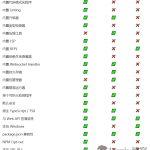- .at() method on built-in indexables
- RegExp Match Indices
- Object.hasOwn
- Error cause
- Top-level await
- Class field declarations
- Ergonomic brand checks for private fields
.at() method on built-in indexables
.at method on built-in indexables 📕.
const cart = ['🍎', '🍌', '🍍'];
// first element
cart.at(0); // '🍎'
// last element
cart.at(-1); // '🍍'
// out of bounds
cart.at(-100); // undefined
cart.at(100); // undefined const int8 = new Int8Array([0, 10, 42, -10]);
// first element
int8.at(0); // 0
// last element
int8.at(-1); // -10
// out of bounds
int8.at(-100) // undefined
int8.at(100) // undefinedconst sentence = 'This is a sample sentence'
// first element
sentence.at(0); // 'T'
// last element
sentence.at(-1); // 'e'
// out of bounds
sentence.at(-100) // undefined
sentence.at(100) // undefinedRegExp Match Indices
additional information about the start and end indices of captured substrings 📕
/(?<xs>x+)(?<ys>y+)/.exec('xxxyyxx');
/*[
'xxxyy',
'xxx',
'yy',
index: 0,
input: 'xxxyyxx',
groups: [Object: null prototype] { xs: 'xxx', ys: 'yy' }
]*/let input = "abcd";
let match = /b(c)/.exec(input);
let indices = match.indices;
// `indices` has the same length as match
indices.length === match.length
// The first element of `indices` contains the start/end indices of the match
indices[0]; // [1, 3];
input.slice(indices[0][0], indices[0][1]); // same as match[0]
// The second element of `indices` contains the start/end indices of the first capture
indices[1]; // [2, 3];
input.slice(indices[1][0], indices[1][1]); // same as match[1]);Object.hasOwn
Object.hasOwn 📕
let books = {}
books.prop = 'exists';
// `hasOwn` will only return true for direct properties:
Object.hasOwn(books, 'prop'); // returns true
Object.hasOwn(books, 'toString'); // returns false
Object.hasOwn(books, 'hasOwnProperty'); // returns false
// The `in` operator will return true for direct or inherited properties:
'prop' in books; // returns true
'toString' in books; // returns true
'hasOwnProperty' in books; // returns trueError cause
cause property indicating the cause of an error. 📕
const actual = new Error('a better error!', { cause: 'Error cause' });
actual instanceof Error; // true
actual.cause; // 'Error cause'try {
maybeWorks();
} catch (err) {
throw new Error('maybeWorks failed!', { cause: err });
}Top-Level await
await outside of async functions in modules 📕
// say this is index.mjs
// fails
await Promise.resolve('🍎');
// → SyntaxError: await is only valid in async function
// fix with wrapping
(async function() {
await Promise.resolve('🍎');
// → 🎉
}());
// to top-level await
await Promise.resolve('🍎') // '🍎'const i18n = await import(`./content-${language}.mjs`);Class field declarations
Orthogonally-informed combination of public and private fields. 📕
class SampleClass {
/*
instead of:
constructor() { this.publicID = 42; }
*/
publicID = 42; // public field
/*
instead of:
static get staticPublicField() { return -1 }
*/
static staticPublicField = -1;
// static private field
static #staticPrivateField = 'private';
//private methods
#privateMethod() {}
// static block
static {
// executed when the class is created
}
}ergonomic brand checks for private fields
Brand checks without exceptions. 📕
class C {
#brand;
#method() {}
get #getter() {}
static isC(obj) {
// in keyword to check
return #brand in obj && #method in obj && #getter in obj;
}
}相关博文
ES2022新特性一览







